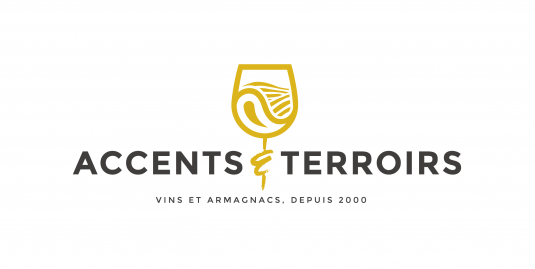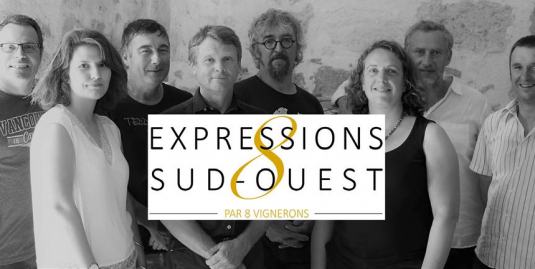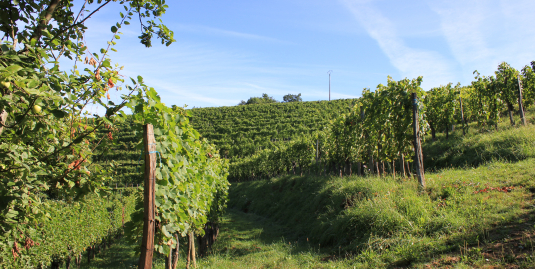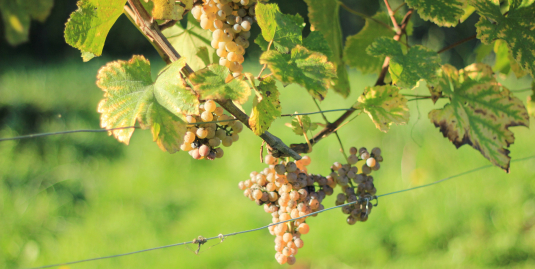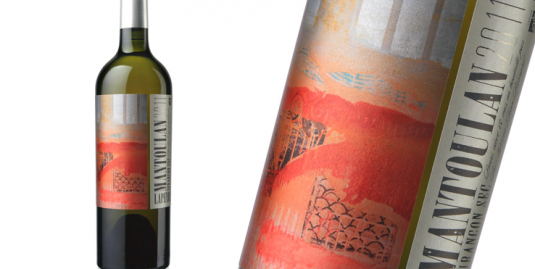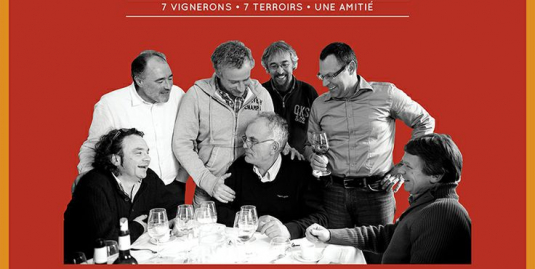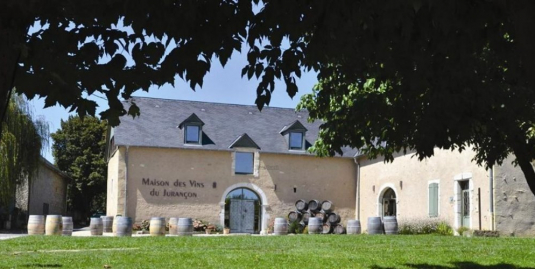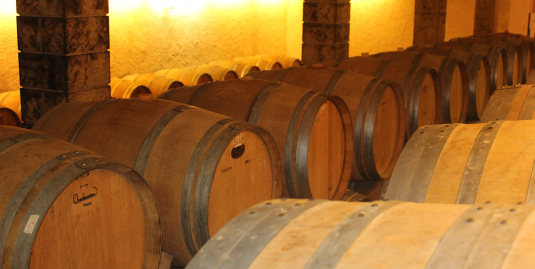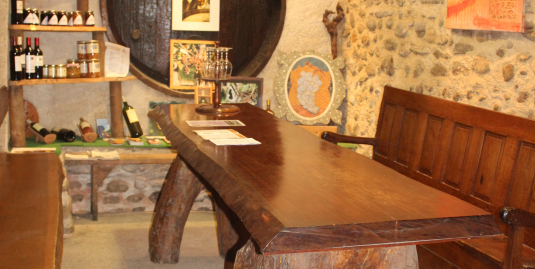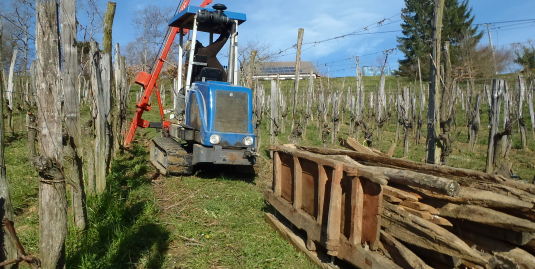The PEOPLE AT Clos Lapeyre
We now cultivate 18 hectares of vines and we do everything: from planting, to bottling, to marketing our bottles. The Clos Lapeyre team is now made up of Sandrine and Gabrielle, who form the administration and accounting department, Ruby and Pauline who form the sales and marketing team, Mathieu, Fred and Romain, who maintain the vineyards, and finally Christian and myself Jean-Bernard Larrieu in charge of the vineyard and responsible of the cellar. Sandrine and Gabrielle’s working time is shared with the winegrower friends through an Employers’ Group.
Accents et Terroirs is an agency used by 12 winegrowers, specializing in wine exporting.
They help export roughly a third of our production to around twenty countries, each with its own administrative constraints. Géraud CHAMBOISSIER, the main actor of Accents et Terroirs is our neighbor, our friend, a keen hunter of the region, and a grape picker from time to time … The 12 winegrowers from the South West for which they promote the wines, are long-time friends, all certified in organic and biodynamic agriculture, they are dynamic and passionate people … The Clos Lapeyre is of course a part of the team.
The GIE “Expressions de Terroir” was created in 1998 from the friendship of 5 winegrowers from the South-West of France. Their objective: put together means of communication and logistics to promote and market their wines in France.
The group has grown to 7 winegrowers and then to 8. The eighth winegrower has been part of the adventure since winter 2017.
We are still structured as an Economic Interest Group, but under the new name “Expressions Sud-Ouest”. We’re by no means a wine merchant/trader but simply a community of winegrowers from the following appellations : Jurançon, Madiran, Gascogne, Fronton, Gaillac, Cahors, Bergerac and Buzet.
For professionals, we offer our wines in groupage through an integrated service: 1 order, 1 delivery, 1 invoice. All our wines are stored on a platform in Lectoure.
A price list optimizes distribution, transport, and management costs.
Expressions Sud-Ouest presents the mosaic of wines from the South-West with the diversity of its terroirs, its grape varieties, and its personalities. Our range includes around 60 different wines.
We remain at your disposal with Yannick, sales manager on 06 67 37 34 21 and by email commercial@expressions-sudouest.com
Since 2013, we have been implementing biodynamics on the vineyard: it is like the “homeopathy” of biology by the application of preparations and the respect of a lunar calendar to revitalize the life of the soil and strengthen the immunity and vitality of plants. Biodynamics is the belief that all forces influence living things.
Significant work on the different buildings was underway and made it possible to recreate the farmhouse with an interior courtyard. This was an opportunity for us to rehabilitate the old henhouse (“poralhera” in Béarnais) into a magnificent reception room, overlooking the vineyards and the Pyrenees mountains, to develop the reception of groups and welcome lovers of Jurançon wines whether it be with family or friends.
This particular year, we were asked to take over the 6 hectares of vineyard around the Nays-Labassère property. It is a magnificent and old vineyard in the heart of the village … This was a new bet for the Clos Lapeyre team.
In 2005, the Nays estate began its conversion to Organic Agriculture.
2002 was the year the culture of organic farming was confirmed, a method we were already working on : By subscribing to the Qualité France organization, conversion to organic was made official on the 10 hectares of Lapeyre. The claim “wine from organically grown grapes” was then made possible.
The “Mantoulan” plot was gradually planted (up until 2008) with traditional Jurançon grape varieties from mass selection: Petit Manseng, Courbu and Camaralet. The first wine was to be produced in 2006.
The marketing of our dry and sweet white wines was now managed by the GIE Expressions Sud Ouest (made up of seven winegrowers who are friends and representatives of 7 AOCs from the South West) for professional customers, restaurants and wine merchants in France.
Le Clos Lapeyre adhered to and actively contributed to the activities of the Jurançon Wine Route: an association that manages still today the magnificent Maison des Vins in the neighboring village of Lacommande. The place has its own store and a laboratory. The Jurançon Wine Route is also a collection of cultural, technical, and commercial activities and events. Finally, it is this very place that promotes the AOC Jurançon.
The Clos Lapeyre hires its second employee.
Construction of a storage room and expansion of the barrel aging cellar.
The « Poudempa » plot was planted with Petit Manseng on 1 hectare.
To ensure constant production, the first employee was hired at the Clos Lapeyre estate and then a pneumatic wine press came to equip the cellar.
The farm stopped growing strawberries and raising cattle, and until 1990 began to expand the cellar. In 1991, the 1 ha “Navaillés” plot was planted with Gros Manseng.
The winery expanded through obtaining 1.5 hectares of vines to rent (Terrenègre).
This spirit of cooperation and pooling of resources and skills was and is important for Clos Lapeyre: the small size of our structures does not allow us to acquire these materials individually, these collaborations promote exchanges between winegrowers.Hence the need for a cooperative.
After his studies in viticulture and oenology, Jean-Bernard LARRIEU set up a small winemaking cellar with the help and complicity of his father Marcel: Clos Lapeyre was born.
The exploitation covered back then 16 hectares, including 3.5 hectares of vines harvested and delivered to the cooperative cellar of Gan, 12 hectares of meadows for the breeding of 25 blond cows of Aquitaine, 0.50 hectares of strawberries in hillsides which produced 10 to 12 tonnes of strawberries per year, sold directly in Pau and providing 2/3 of the farm’s income.
In the heart of the Jurançon appellation, the estate was bought in 1920 by Jean Larrieu. His son Marcel continued to work diligently to cultivate vines and developed cattle breeding and strawberry cultivation.

